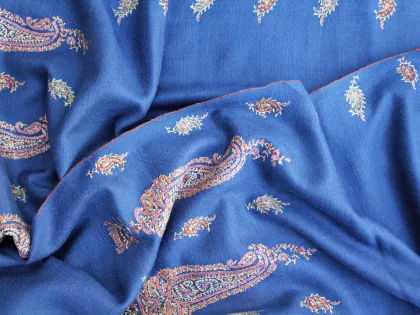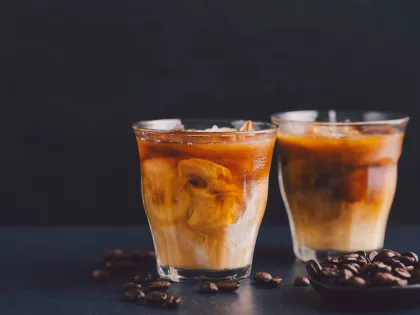The Ao Dai
Wherever you look in modern Vietnam you will see women of all ages wearing the áo dài - the traditional Vietnamese costume comprising a fitted, full-length dress worn over black or white loose-fitting trousers.
In its original form, dating back to 1744, both men and women would wear the áo dài, following the command of Lord Vu Vuong of the Nguyen Dynasty that everyone should wear trousers along with a buttoned gown. The style changed after the 1930s, however, and the áo dài gradually ceased to be commonly worn by men. The preferred style of today was created by a pair of Saigon tailors in the 1950s, who designed the áo dài with raglan sleeves incorporating a diagonal seam running from the collar to the underarm.
Culturally there is still more to the áo dài than meets the eye. First of all, the colour depends on the age and status of the wearer, so young girls will typically wear white with a full lining to indicate their purity. Older girls who have not yet married may graduate to soft pastel colours, while bold colours are usually worn only by married women, although times are changing in Vietnam and the availability of new fabrics and designs has resulted in a relaxation of the colour codes.
This new found flexibility has turned the áo dài into the standard uniform for female staff working in hospitality or in offices, while many student uniforms also incorporate the áo dài.
Vietnamese Lacquerware
The traditional art form of lacquerware is found across Southeast Asia, but it is the Vietnamese who have elevated their tradition since the early 20th century through the influence of French painting techniques. The variety of materials and colours used in Vietnam lead to the creation of a finished product which is quite different to that found in neighbouring countries, and you can see this for yourself here in Saigon.
Known as son mài, Vietnamese lacquer painting involves a complex and time-consuming process to create images using materials such as eggshells, seashells, or gold leaf along with the lacquer - the resin from the cay son tree that grows best in the mountains of Phu Tho Province.
The resin is obtained in much the same way as rubber, with an incision made in the tree in order to collect the sap. Critically, however, the quality of the sap varies according to the time of year it is gathered. In Japan or Korea, harvesting is only carried out at the best times, but in Vietnam it can be a continuous process, with the lacquer subsequently separated into different grades. Fresh lacquer is whitish in colour, but turns brown when exposed to the air. The black lacquer characteristic of finished artwork derives its hue from the chemical reaction between the lacquer and the iron rods with which it is stirred.
To create a work of art, layers of highly adhesive lacquer are gradually built up, with each layer taking at least a day to dry before the next can be applied. The details are inlaid using shell, gold leaf, or paint. It is a painstaking process that can take several weeks to reach a finished product.
Conical hats
An Iconic Vietnamese hat is a unique souvenir. The conical hat has been a symbol of Vietnam for many generals from farmers to daily use. This hat has a long history. It is believed that conical hats have been carved since around 2500 BC but were popular and widely used in the Tran dynasty in the 13th century.
https://www.itourvn.com/blog/a-guide-to-the-vietnamese-conical-hat
Pepper from Phu Quoc – The great “King of Spices”
Vietnamese coffee might be well-known globally but there is another food-related souvenir that you should not miss when you are in Vietnam. Pepper from Phu Quoc is a perfect souvenir for those who enjoy cooking (make sure bringing some home is absolutely ok with your custom)
Pepper cultivation was first introduced in the 18th century by the Chinese. The harvest season starts from February to April. There are 4 different types of peppers; black, red, white, green.
The soil in Phu Quoc is rich with quartz which is needed for peppercorn to grow. Vietnam is the largest pepper producer in the world. Although not yet recognized as ‘geographical indication’ like its competitor in Kampot, Cambodia, rumour has it that it will achieve that goal this year.
https://journeyonair.com/things-to-buy-in-vietnam/
Check out our beautiful resort in Vietnam: Centara Mirage Resort Mui Ne



Share-
-
-
-